In the realm of UI/UX design and development services, landing pages are pivotal. They serve as the gateway to your digital presence, enticing visitors to take action and engage with your brand. Leveraging WordPress, a versatile and user-friendly platform, you can design landing pages that captivate your audience and drive conversions. Let’s delve into the key steps and strategies for creating stunning landing pages in WordPress.
Anatomy of a Successful Landing Page
A successful landing page is not merely a visually appealing design; it’s a strategic combination of elements meticulously crafted to captivate attention, instill trust, and drive conversions. It’s about understanding your audience’s psychology and presenting them with a compelling offer that resonates with their needs and desires. Let’s delve deeper into the key components of a high-converting landing page.
- Catchy Headline. The headline is the first thing visitors see when they land on your page, so it needs to grab their attention immediately. Start with a catchy headline that communicates the benefit of your offer. Use language that speaks directly to your audience’s pain points or desires, and make sure it’s relevant to the content of your page.
- Persuasive Copywriting. The copy on your landing page is crucial in persuading visitors to take action. Use persuasive copywriting techniques to highlight the value proposition of your product or service. Focus on the benefits rather than just the features, and use language that resonates with your target audience. Keep your copy clear, concise, and compelling to keep visitors engaged and interested in what you have to offer.
- High-Quality Visuals. Humans are visual creatures, so incorporating high-quality images or videos can significantly enhance the effectiveness of your landing page. Choose visuals that are relevant to your offer and help reinforce your message. Whether it’s product photos, demo videos, or infographics, ensure your visuals are professional-looking and visually appealing.
- Social Proof Elements. Building trust is essential for convincing visitors to take action on your landing page. One way to do this is by including social proof elements such as testimonials, customer reviews, or case studies. These provide evidence that others have had a positive experience with your product or service, which can help alleviate any doubts or concerns your visitors may have.
Select the Right WordPress Theme for Landing Pages
The foundation of a great landing page starts with choosing the perfect WordPress theme. Opt for a theme that aligns with your brand aesthetics and offers the necessary features for crafting high-converting landing pages. Look for themes prioritizing speed, responsiveness, and compatibility with popular plugins like WooCommerce and Elementor.
- Consider Your Brand Identity. Ensure the theme aligns with your brand aesthetics and effectively reflects your brand identity. Look for customizable options to tweak colors, fonts, and layouts to match your brand guidelines.
- Prioritize Performance. Opt for themes that prioritize speed and responsiveness. A fast-loading website enhances user experience and contributes to better search engine rankings.
- Check Plugin Compatibility. Since plugins play a crucial role in extending the functionality of your website, choose a theme compatible with popular plugins like WooCommerce for e-commerce functionality and Elementor for advanced page-building capabilities.
- Read Reviews and Ratings. Before finalizing a theme, read reviews and ratings from other users to get insights into their experiences. Pay attention to feedback regarding support, updates, and compatibility issues.
Design Compelling Landing Page Content
Crafting compelling content is essential for creating landing pages that capture visitors’ attention and guide them toward action. Effective content engages users, addresses their needs, and persuades them to convert. Here’s how to design compelling landing page content that drives results:
- Outline Key Benefits. Start by clearly outlining the key benefits of your offer. What problem does your product or service solve? How does it improve the lives of your customers? Structure your content in a way that highlights these benefits upfront, making it easy for visitors to understand the value proposition of your offer.
- Use Clear and Persuasive Copy. Craft persuasive copy that speaks directly to your target audience. Use language that resonates with their needs and desires, and communicate how your offer can address their pain points. Keep your sentences short; use bullet points or numbered lists to highlight key features or benefits.
- Enhance Readability with Visuals and Formatting. Break up large blocks of text by incorporating visual elements such as images, videos, or infographics. Visuals make your landing page more visually appealing, help reinforce your message and keep visitors engaged. Use descriptive alt text for images to improve accessibility and ensure that all users can understand your content.
- Optimize Page Layout for User Experience. Design your landing page with user experience in mind. Use intuitive page layouts and navigation elements to seamlessly guide visitors through the conversion process. Place your call-to-action (CTA) prominently on the page, making it easy for users to take the desired action. Test different layouts to see which ones perform best and optimize accordingly.
- Test and Iterate. Continuously test different combinations of content and design elements to see what resonates best with your audience. A/B testing allows you to compare different landing page variations to determine which leads to the highest conversion rates. Use the insights gained from testing to iterate and refine your landing page content for optimal performance.
Optimize Landing Page Content for Conversion
Content is king, especially when it comes to landing pages. Craft compelling headlines and persuasive copy that clearly articulate your value proposition and compel visitors to take action. Incorporate relevant images, videos, and testimonials to enhance engagement and build trust with your audience. Clarity and conciseness are key to keeping your visitors engaged and driving conversions.
- Craft Compelling Headlines. Your headline is the first thing visitors see when they land on your page, so make it count. Use persuasive language to communicate your value proposition and entice visitors to explore further.
- Focus on Benefits. Highlight the benefits of your product or service rather than just listing features. Help visitors understand how your offering can solve their problems or fulfill their needs.
- Incorporate Social Proof. Showcase testimonials, reviews, and case studies to build trust with your audience. Social proof acts as validation and reassures visitors that they are making the right decision by engaging with your brand.
Integrate Forms and Calls-to-Action (CTAs)
Effective lead generation begins with strategically placed forms and CTAs on your landing pages. Whether it’s a subscription form, contact form, or download button, ensure they are prominently displayed and easily accessible. Keep your forms concise by asking for only essential information to minimize friction and increase conversion rates.
- Position your forms and CTAs strategically to capture attention and encourage action. Place them above the fold where they are easily visible without scrolling, and consider repeating them throughout the page for maximum exposure.
- Keep your forms concise by asking for only essential information. The fewer fields visitors must fill out, the more likely they will complete the form. Use inline validation to provide real-time feedback and guide users through the form submission process.
- Use clear and actionable language in your CTAs to prompt visitors to take the desired action. Experiment with different text, colors, and styles to see what resonates best with your audience.
Test and Iterate for Improved Performance
The journey to creating a high-converting landing page doesn’t end with the initial design. Continuous testing and optimization are paramount to maximizing your conversion rates. Utilize A/B testing tools to experiment with elements like headlines, CTAs, and color schemes. Analyze the data and iterate based on the insights gathered to refine your landing pages for optimal performance.
- Before testing, define clear objectives and key performance indicators (KPIs) to measure success. Whether it’s increasing conversions, reducing bounce rates, or improving engagement, having specific goals will guide your testing strategy.
- Begin by testing one element at a time to isolate variables and accurately measure the impact of changes. Common elements to test include headlines, CTAs, imagery, and form layouts.
- Use analytics tools to track user behavior and monitor the performance of your landing pages. Pay attention to metrics such as conversion rate, click-through rate, and time on page to gauge effectiveness.
- Use the insights gathered from testing to inform future iterations of your landing pages. Continuously refine and optimize your designs based on data-driven decisions to achieve better results over time.
Conclusion
In the competitive landscape of digital marketing, compelling landing pages can make all the difference in attracting and converting visitors into customers. WordPress’s robust features and flexibility, coupled with the strategies outlined above, allow you to create stunning landing pages that not only elevate your brand but also drive tangible results for your business. By focusing on crafting clear and persuasive copy, incorporating attention-grabbing visuals, and optimizing your page layout for user experience, you can design landing page content that effectively engages visitors and drives conversions.
Start implementing these best practices today and watch your WordPress landing pages become powerful assets in your marketing arsenal.






